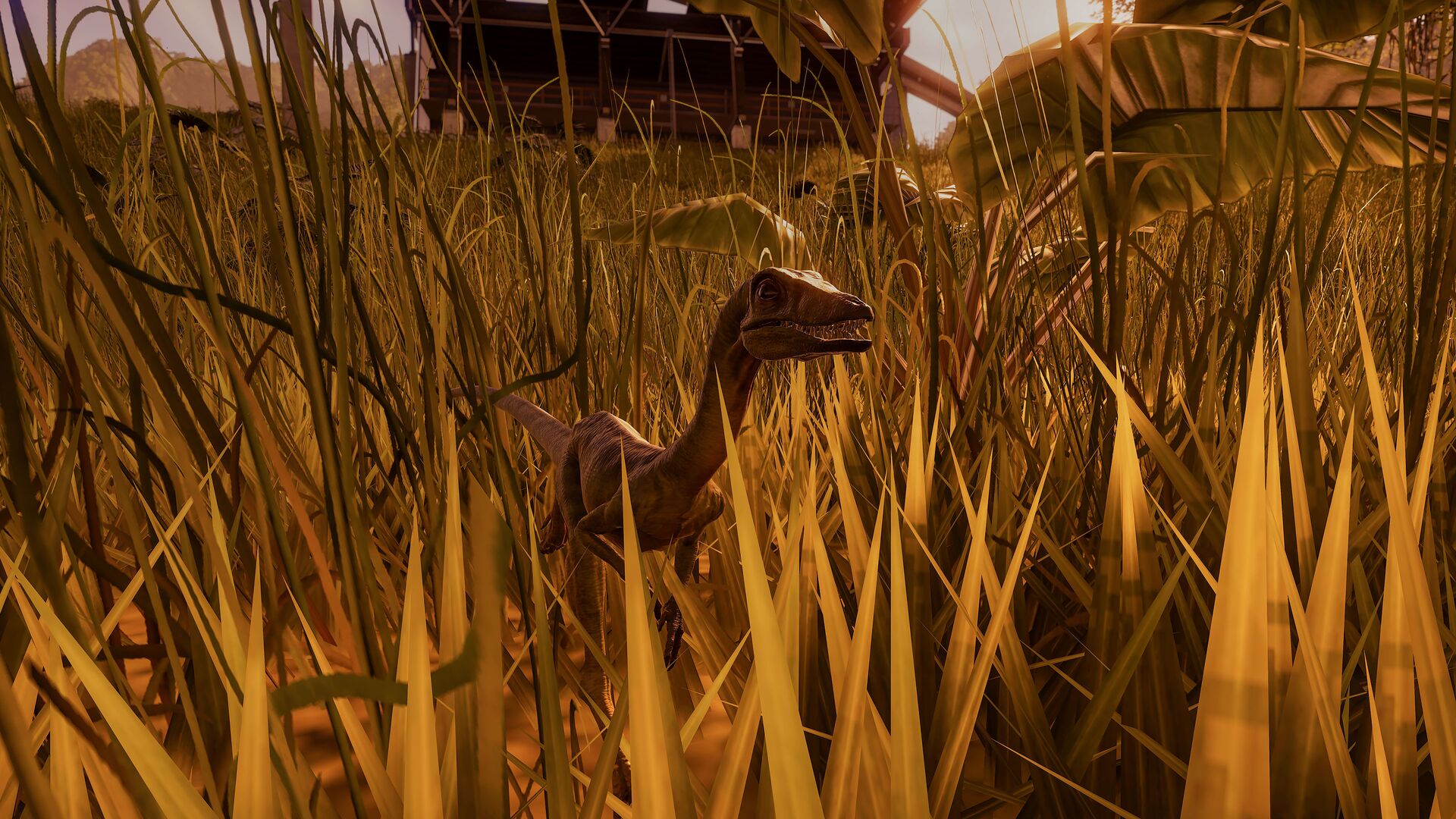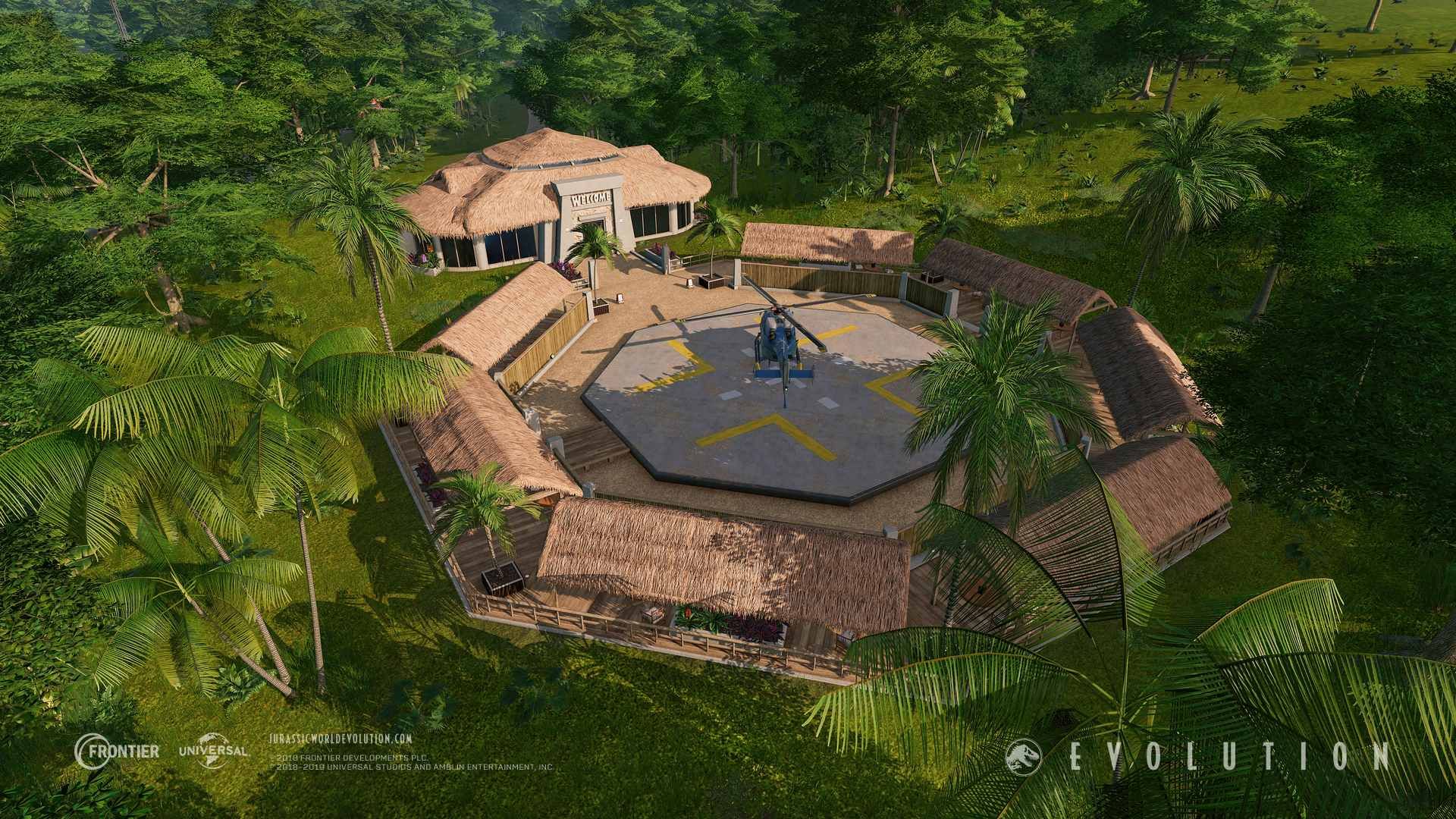Jurassic World Evolution could have been a quick cash-grab tie-in game for the recent films, but Frontier Developments took the park management strategy game and added layers of depth. It allowed players to really feel like they were running a dinosaur theme park, juggling everything from keeping the guests entertained, to genetics research, and of course, making sure that people don’t get trampled or eaten. A year and a half since its original release, Frontier is still supporting Jurassic World Evolution, and the latest addition takes players on a bit of a nostalgia trip, back to the original Jurassic Park.
Having loved (and been terrified by) dinosaurs since I was a kid, I was thrilled to be able to go back to the failed theme park that started it all. Return to Jurassic Park takes players to the ruins of the original 1993 film’s titular Jurassic Park, and the littlest details have not been spared here. Front and center is the casting of not only Jeff Goldblum, returning from the main campaign once again as Ian Malcolm, but also getting Laura Dern and Sam Neill to reprise their roles as Ellie Sattler and Alan Grant, respectively. Their agreement to voice their characters in the game may be in part due to them coming back for Jurassic World 3, but the banter among these three characters is some of what makes Return to Jurassic Park such a nostalgic experience.
Jurassic Park’s Own ‘What if…?’
It’s not all just throwbacks though. The plot for the Return to Jurassic Park expansion is a “what if” scenario that sees Malcolm, Sattler, and Grant return to the dino park they had once escaped from, alongside John Hammond (voiced by a Rochard Attenborough soundalike) and a younger version of Jurassic World Evolution’s Cabot Finch. The goal is to fix the park up, learning from the mistakes of the past and doing Jurassic Park right this time around. That means there’s a bit of dino wrangling and repairs that need to happen before you can make the Jurassic Park of your dreams.
Unlike the main game that kind of throws you right into developing new dinosaurs and building and managing the park, Jurassic Park needs a little bit of cleanup first. The opening moments of the game hit right in the nostalgia, showing off the ruined visitor’s center, the infamous electrical substation, the wrecked raptor pen, and even the muddy sloped area where Dennis Nedry met his end to a Dilophosaurus. This is Jurassic Park just as we left it back in 1993, and for fans of the original, it’s an absolute treat to come in and undo all the damage that was done.
Not managing a park immediately means going more hands-on and taking direct control to repair the facilities and recapture dinosaurs. There’s something absolutely magical and thrilling about driving a ranger jeep around to tranquilize dinosaurs and return them to their proper locations. Whether it’s the awe that mimics the moment Sattler and Grant first so the Brachiosaurs, to terrifying chases as you get the loose Velociraptor population under control, Return to Jurassic Park makes a point of putting you on the ground before letting you oversee the wider operations. That’s an important element that really helps communicate the scope of what you’re building.
All the Small Things
Other small elements and touches recapture what it meant to love the original Jurassic Park film. A classic cartoon of Mr. DNA greets players on the Research screen. The style of the buildings and structures all mimic the original vision of Jurassic Park, rather than the new modern look of Jurassic World. There’s even a special visual filter applied, a subtle but defining feature that helps transport players back. And then there are the windshield wipers.
If there’s a certain sound that I didn’t know haunted me from Jurassic Park, it’s the windshield wipers. Anytime characters are stuck in the rain in a vehicle (which is surprisingly often in that movie), the eerie sound of the squeaky windshield wipers became the underlying soundtrack to those scenes. Even in utter silence, characters holding their breath so as to not catch the attention of a hungry carnivore, the squeak and swish of the windshield wipers was like a constant metronome to the moments of terror. Anytime it rains in Return to Jurassic Park, if you’re in close enough quarters to a vehicle, the same ominous sound warns you that something lurks out there in the dark wet jungle.
It’s these exceptionally tiny touches and attention to detail that elevate Return to Jurassic Park to a place of nostalgic reverence. Frontier Developments clearly has a respect and love for the series, capturing elements that we may not have even been consciously aware of as viewers of the movie. Even the appearances of the dinosaurs have been updated to match the original film trilogy’s versions, which are decidedly different than what the new Jurassic World trilogy was aiming for.
Once you get things back in working order, it’s time to create the Jurassic Park of your dreams. You’ll lay the track for a guided tour of Isla Nublar, sending visitors off in those classic Jurassic Park jeeps, through the famous grand gates of Jurassic Park. You’ll research new dinosaurs and fly them in from Isla Sorna where they are being hatched and raised. You get to take your nostalgia and own it, making the park as safe or dangerous as you’d like (you can send your safari tour straight through the middle of the T. Rex enclosure if you want, but I wouldn’t recommend letting your visitors become lunch so easily). I can’t count how many times I hopped into the first-person view just to take a ride around my version of Jurassic Park, as close to living that dream as I can possibly get. (Hey Frontier, can we get a VR update that lets us tour our park in a VR headset?)
De-inventing Jurassic World
Return to Jurassic Park is effectively the entire main Jurassic World: Evolution rebuilt with the original Jurassic Park themes in mind. Frontier actually worked with Universal to get access to original assets to ensure that everything looked and felt like the classic film. Return to Jurassic Park doesn’t, however, operate as a kind of standalone expansion. If you are unfamiliar with the main game, it’s highly recommended that you hop in and complete an island or two from Jurassic World Evolution’s main campaign before trying your hand at rebuilding Jurassic Park. Return to Jurassic Park does have limited high-level tutorials and guidance, but it assumes a basic knowledge of the main game, so it’s not a great starting point for beginners.
Once the Velociraptors and T.Rexes are wrangled, the park repaired, and everything operating as Hammond had originally envisioned it, you can take the classic Jurassic Park into Jurassic World Evolution’s sandbox and challenge modes, allowing you true freedom to create whatever you’d like. It doesn’t, however, let you combine elements from the Return to Jurassic Park expansion and the main Jurassic World Evolution, due to some of the differences in how they function. You’ll have to pick one or the other, but if you’re a fan of the classics, this expansion gives you a whole new park to build.
Return to Jurassic Park is a nostalgic trip back to the dinosaur theme park that started it all. It’s a reverence for the series that recaptures some of the best elements of that classic film while giving players creative control over building the Jurassic Park they’ve always dreamed of. Doing more than just adding ’90s set dressing to the main game, Return to Jurassic Park reinvents (de-invents?) Jurassic World Evolution. To revisit the park alongside the beloved voices of Sam Neill, Laura Dern, and Jeff Goldblum simply adds to the magic. As an expansion clearly built by Jurassic Park fans for Jurassic Park fans, this is not only a must-have addition to Jurassic World Evolution, but presents a pretty compelling argument for even picking up the game in the first place.
Jurassic World Evolution: Return to Jurassic Park review code provided by publisher. Reviewed on a launch PS4. For more information on scoring, please read our Review Policy.







